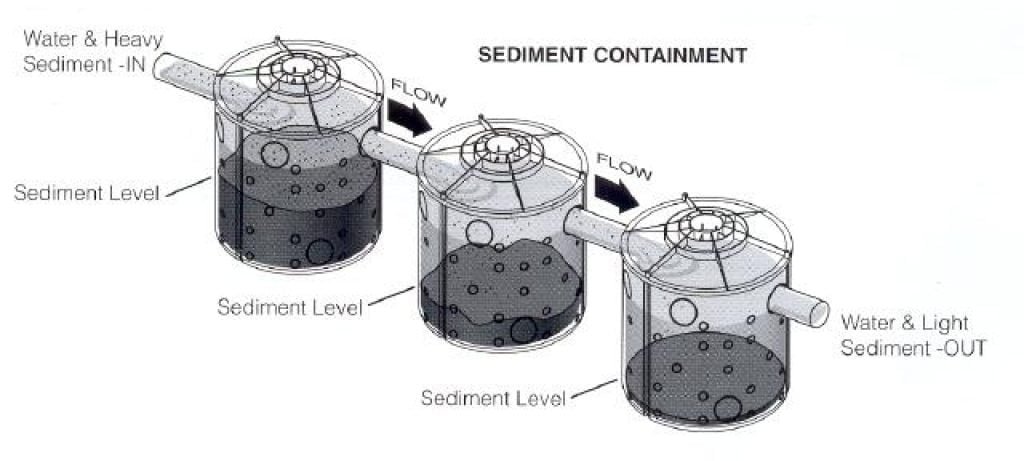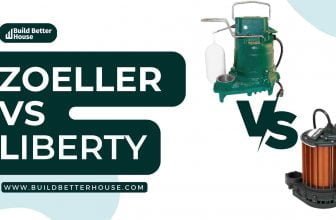Dry Well vs Leach Field: Which One Is Better For Your Home?

If you are in the market for a septic system for your home, you will likely hear about dry wells and leach fields. While both systems are designed to handle the wastewater from your home, there are some major differences between the two. So which one is better dry well vs leach field?
A dry well is an excavation in the soil that is filled with gravel and other materials to form a basin. The basin is designed to collect water and allow it to seep into the surrounding soil. A leach field, on the other hand, is a network of perforated pipes that are installed in the soil.
The wastewater is then piped through the network and dispersed into the surrounding soil. Both systems have their pros and cons and it is important to understand the differences before making a decision on which system is right for you.
Let’s explore dry well vs leach field in detail and decide the best option for your home!
What is a dry well and how does it work?
Dry wells or seepage pits are large, concrete-lined cylinders that are dug into the ground and have a particular filter at the bottom to catch the wastewater by halting water flow from the septic system.

Wastewater is pumped out of the septic tank and flows through several pipes to a particular well on your property. The wastewater will then flow down to a sand or gravel bed at the bottom of the well and is diverted away from the groundwater towards the soil.
Sand or gravel will filter the wastewater, which will subsequently absorb by the ground. The wastewater can be broken down by the bacteria present in the soil into harmless nutrients and pollutants, preventing the effluent from entering groundwater.
What is a leach field and how does it work?
A leach field is a network of perforated pipes buried under the ground’s surface. The wastewater gets spread over a vast region so the land can absorb and redirect it away from the groundwater. A leach field can use with any septic system configuration.
A network of underground, perforated pipes in your septic system’s leach field distributes the waste from your house into the soil.
Since the soil is porous and teeming with microbes, pollutants can easily break down there. The ground can filter out 70% of the wastewater’s toxic elements.
During septic system wastewater treatment, the wastewater flows through a series of perforated pipes in a leach field. These pipes are placed beneath the ground close to your house—the perforations the wastewater to seep into the surrounding soil.
As a result, it never comes in contact with groundwater and cannot contaminate the water supply. Moreover, plenty of microorganisms in the porous soil surrounding the leach field can degrade the hazardous organic compounds in the effluent.
Dry well vs Leach field
A dry well is a single, substantial structure penetrating the surface. A leach field is a collection of pipes that run parallel to the surface.
The installation of dry wells in septic systems is currently less prevalent than it formerly was. Dry wells have the potential to contaminate groundwater, which most local governments restrict due to their deep subterranean location and usual size.
A leach field, on the other hand, does not penetrate the ground as deeply as a dry well.
The leach field is spread horizontally. to the ground, as opposed to vertically like the dry well, so it occupies a significantly more expansive space.
The two alternative solutions, the leach field, and the dry well, address the problems with gray water and waste disposal. Both carry sewage from septic systems to the soil system, where it will clean up and processed.
The leach field uses numerous smaller networks that run parallel to the surface, whereas the dry well uses a single large structure to reach deep into the ground.
Dry well vs Leach field: Pros and Cons
Let’s now examine the pros and cons of dry wells and leach fields.
Dry Well vs Leach field: Pros
- A dry well removes all water from the septic system’s water. This includes all contaminants as well as any clean water.
- The process is much more thorough than the leach field’s water filtering process.
- A dry well is a one-time investment. It just needs to install correctly and will last for as long as the homeowner owns the home.
- As the leach field is constantly in use, you never have to worry about it getting clogged or repairing or replacing it like you do a dry well.
- A leach field is easy to maintain. You just need to ensure that the leach field’s perforated pipes stay clear of debris so that the water can flow freely through the ground and back into the leach field.
- The leach field has a self-cleaning mechanism.
The water filters the soil and sand as it flows downward and cleans the leach field’s pipes by removing clogs.
Dry Well vs Leach field: Cons
- A dry well will not work continuously. It catches the water from the septic system when the system is not in use.
- A dry well will only work for a home that has no surface water nearby. If there is groundwater nearby, the dry well will not prevent it from being contaminated.
- A dry well can only handle a certain amount of water at a time. If the septic system pumps out more water than the dry well can hold, some will flow out of the dry well and back into the ground.
- The leach field does not remove all contaminants from the water. It filters some but leaves others behind, as its self-cleaning mechanism is imperfect.
- Sometimes, it cannot clear a clog from the pipes if it is too large or heavy and gets pushed further down into the ground.
- If this happens, the leach field’s water cleaning process will be interrupted, and the water may start to flow back into the soil and clog up nearby water sources.
Dry well vs Leach field: Which option is best for your home?
Both leach fields and dry wells prevent wastewater from contaminating groundwater. However, dry wells are more expensive and need to maintain over the long term.
If you have a large property and need many wells, the cost of digging them can add up. On the other hand, leach fields are less expensive and easier to maintain. Consider installing a leach field if your house has a high water table.
This is because the water table is the level at which the groundwater reaches the surface. If the water table is high and the soil is not very porous, there will need more room for the wastewater to absorb by the ground. It will therefore come into contact with the groundwater, which could contaminate it.
On the other hand, a leach field will often install in existing residential properties where a dry well is not possible or permitted.
Dry well vs Leach field: Things to consider before making your choice
There are a few factors to consider before choosing between a dry well vs leach field.
1. Landscape
You’ll need to consider your property’s landscape before making your choice. If you have a lot of sloping land, installing a leach field could be more challenging. This is because spreading the wastewater across a broader area could be challenging on a slope.
2. Water table
You also need to consider your property’s water table. If the groundwater is close to the surface, the wastewater could contaminate it. This may be a concern if you rely on well water for drinking and cleaning.
3. Soil type
You should also consider the soil on your property. If the soil is not very porous, it might be unable to absorb the wastewater and divert it from the groundwater. Dry wells are a better option in this case.
Conclusion
Hope you are now well aware of the difference between a dry well vs leach field and are ready to make your choice!
A leach field is a network of perforated pipes buried under the ground’s surface. A dry well is a large hole that is dug into the ground and lined with concrete. Both of these systems are designed to prevent wastewater from contaminating groundwater.
FAQ
Dry well vs leach field: Which one to choose?
There is no right or wrong choice when it comes to dry well vs leach field, both systems have their advantages and disadvantages, so it is crucial to conduct your research before choosing a drainage system.
How do Septic Systems Work?
A pipe leading to a septic tank transports waste from a house. Sludge is composed of solid waste that sinks to the bottom of the catch basin, whereas scum is composed of fats, oils, and grease that float to the top.
Microorganisms break down sludge and some water pollutants. Eventually, the septic tank discharges its remaining effluent onto a drain field. Drywells and leach fields are examples of the various types of drain fields.
Read More
Ideal French Drain Gravel Size For Your Yard: Everything You Need To Know
Top 4 Water-Powered Sump Pump: [Tested & Reviewed]
Sump Pump Float Stuck ? Here’s How to Fix It!






